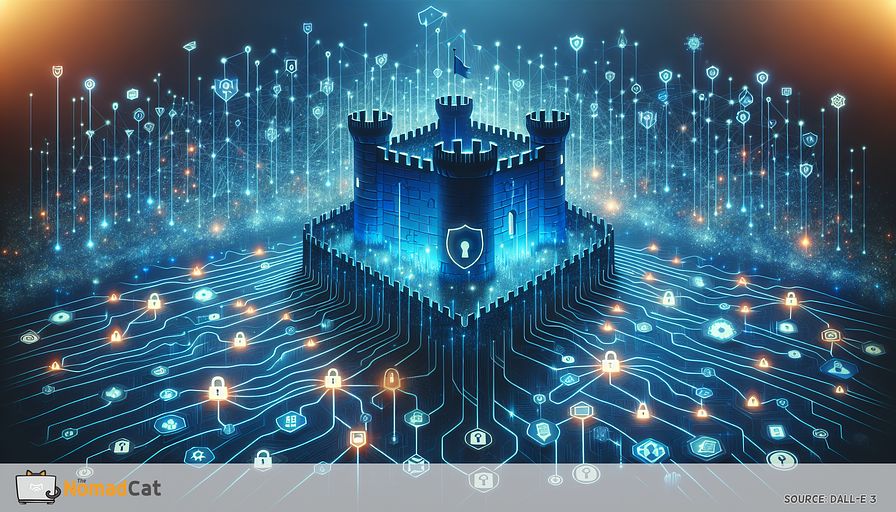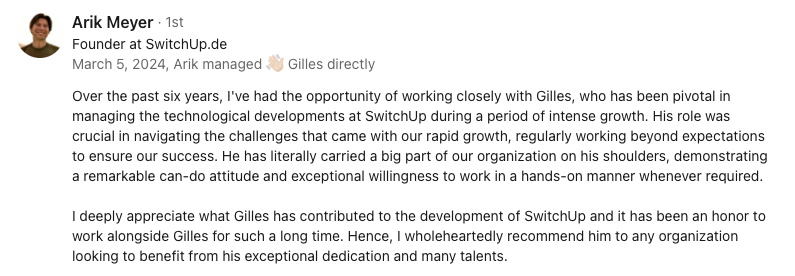Abstract:
The proliferation of Internet of Things (IoT) devices has significantly increased the attack surface for cybercriminals, making the need for robust cybersecurity measures more critical than ever. This article explores key strategies for enhancing IoT security, including the development and implementation of strong cybersecurity protocols. Key focus areas include device authentication techniques to ensure that only authorized devices can connect to networks, data protection to safeguard sensitive information from unauthorized access, and network security to protect against external attacks. Additionally, the importance of regular vulnerability management through software updates and patching is discussed, alongside the role of end-to-end encryption in securing data in transit. With the right security measures in place, organizations can deploy IoT technologies safely, benefiting from enhanced operational efficiency without compromising on digital trust.
understanding the need for IoT security
The explosion of IoT devices has been nothing short of phenomenal. Everywhere you look, there's a new gadget or appliance that's getting connected to the internet, making our lives easier, smarter, and more efficient. From smart thermostats to wearables, these devices have become an integral part of our daily routines. However, this surge in connectivity has also widened the target area for cybercriminals. Every connected device presents a potential entry point for attackers, which makes the need for robust IoT security measures absolutely critical.
We can't afford to take cybersecurity lightly anymore. Protecting our devices and networks isn't just about shielding ourselves from financial losses but also safeguarding our privacy and personal data. It's high time we implement strong and effective security measures to protect our IoT devices from malicious intent.
risks associated with IoT devices
IoT devices, with their convenience and efficiency, unfortunately come with a host of vulnerabilities. Cybercriminals often target these devices because their security is frequently overlooked. Some common weaknesses include weak or default passwords, outdated firmware, and a lack of encryption. These flaws open doors for unauthorized access and exploitation.
Attackers can exploit these vulnerabilities to carry out various malicious actions. They might hijack devices to create botnets, conduct Distributed Denial of Service (DDoS) attacks, or steal personal data. The consequences of data breaches can be devastating, leading to financial loss, identity theft, or even damage to a company’s reputation.
Real-world examples highlight the severity of such threats. The infamous Mirai botnet attack in 2016 exploited poorly secured IoT devices to bring down major websites like Twitter and Netflix. This incident underscored the urgency of addressing IoT security risks. Similarly, a significant breach exposed millions of wearable fitness devices' data, compromising users' privacy globally. These examples serve as a stark reminder of the importance of robust security measures.
device authentication techniques
Ensuring that only authorized devices connect to a network is a cornerstone of IoT security. Let's explore several impactful device authentication techniques that can bolster our defenses:
multi-factor authentication
One approach to enhance security is multi-factor authentication (MFA). By requiring two or more verification methods, such as a password plus a one-time code sent to a mobile device, MFA significantly reduces the risk of unauthorized access. It's an extra layer of security that makes it harder for malicious actors to compromise a device.
biometric verification
Another effective method is biometric verification. Leveraging unique physical attributes like fingerprints, facial recognition, or even retinal scans ensures that only legitimate users can access IoT devices. This method adds an additional level of personalization and security, making it an excellent option for sensitive environments.
unique digital signatures
Employing unique digital signatures ensures that each device has a distinct identity. Digital certificates can be used to verify a device's authenticity, much like a digital fingerprint. This method verifies that the device attempting to connect is indeed the genuine article and not a spoofed or cloned version.
Implementing these strong security protocols is non-negotiable. They play a crucial role in maintaining the integrity and trustworthiness of our interconnected devices. A comprehensive authentication strategy, involving multiple methods, creates a resilient barrier against potential threats, providing peace of mind in an increasingly connected world.
Staying ahead in the IoT security game is not just about keeping up with technology but also about proactively adopting robust measures. It’s a layered approach that makes all the difference.
data protection strategies
When it comes to securing sensitive information within IoT ecosystems, several critical strategies come into play. Foremost among these is the use of encryption. Encrypting data, whether in transit or at rest, ensures that it remains unintelligible to unauthorized parties. This layer of protection is indispensable for maintaining confidentiality.
Besides encryption, another key technique is data masking. By obfuscating sensitive data elements, data masking makes real information unavailable to unauthorized users. It is especially useful during testing and development phases when actual data isn’t necessary but the format remains vital.
secure data storage
The importance of secure data storage solutions cannot be overstated. Ensuring that data is stored in a safe, encrypted manner prevents unauthorized access and potential breaches. Robust storage mechanisms often include multi-layered security protocols, regular audits, and monitoring to detect any unusual activity quickly.
access control management
Effective access control is another cornerstone of data protection. Implementing strong policies that dictate who can access specific data sets, and to what extent, minimizes the risk of unauthorized access. Role-based access control (RBAC) and principle of least privilege are practical methods to enforce stringent access rules.
By incorporating these comprehensive strategies, we can create robust defenses against data breaches and unauthorized access, thereby ensuring the integrity and confidentiality of sensitive information within the IoT ecosystem. Embracing these practices is not just about adhering to industry standards but actively safeguarding our digital future.
network security measures
Ensuring the safety of networks that IoT devices communicate over is vital for robust security. By deploying effective network security measures, we can greatly reduce the threat of external attacks and unauthorized intrusions.
firewalls
Installing firewalls is one of the primary steps in fortifying network security. Firewalls act as a barrier between the internal network and external threats, monitoring incoming and outgoing traffic to block suspicious activities. They are our first line of defense, filtering out potential threats before they penetrate deeper into our systems.
intrusion detection systems (IDS)
Next, we have Intrusion Detection Systems, which play a crucial role in identifying and responding to potential threats in real time. IDS monitor network traffic for any unusual or malicious activity and alert administrators to take immediate action. By doing so, they provide an added layer of security, helping to catch breaches before they cause significant damage.
virtual private networks (VPNs)
VPNs are another essential tool that helps secure the communication channels of IoT devices. By creating encrypted connections over the internet, VPNs ensure that data transmitted between devices remains confidential and protected from eavesdropping. They also help in masking the network's location, making it harder for attackers to pinpoint potential targets.
Implementing these network security measures can significantly safeguard our IoT ecosystems. Firewalls, IDS, and VPNs work together to create a robust framework that protects against external attacks and unauthorized access. These tools not only bolster our defenses but also provide peace of mind, knowing that our networks and the data they carry are secure.
regular vulnerability management
Staying ahead of potential threats requires continuous vigilance. Regular vulnerability management is absolutely essential in the world of IoT security. One of the key aspects of this is ensuring that software updates and patches are applied promptly. These updates often include important security fixes that address newly discovered flaws.
Taking a proactive stance is crucial. By routinely scanning devices and networks for weaknesses, we can identify and mitigate vulnerabilities before they become a problem. This approach involves not just reactive measures but also anticipating and preparing for potential threats. It's about creating a culture of ongoing monitoring and enhancement.
Let's break it down further:
- Regular software updates and patching: Ensuring that all devices are running the latest software versions is vital. Manufacturers frequently release updates that include fixes for newly discovered security breaches.
- Continuous monitoring: Implement tools that constantly scan for vulnerabilities. This can help catch issues that might otherwise go unnoticed until it’s too late.
- Proactive threat identification: Stay informed about the latest threats and vulnerabilities. Subscribe to security bulletins and join relevant forums to keep abreast of emerging risks.
By integrating regular vulnerability management into our security practices, we can significantly reduce the risk of exploitation. This not only helps in safeguarding our infrastructure but also builds trust with users, knowing that their data and privacy are consistently prioritized. Being proactive in this regard makes all the difference in maintaining a secure IoT environment.
end-to-end encryption for data security
End-to-end encryption (E2EE) is a critical component in fortifying the security of IoT systems. This method ensures that data transmitted between devices remains confidential, as it's encrypted right from the source and can only be decrypted by the end recipient. With E2EE, even if data is intercepted during transmission, it's rendered useless to unauthorized parties.
The beauty of E2EE lies in its robustness. It leverages complex algorithms to scramble data into an unintelligible format, viewable only by those with the correct decryption keys. This approach ensures that whether it's personal information or critical business data, its integrity remains intact and away from prying eyes.
To highlight the effectiveness of E2EE, consider a scenario where a smart home system communicates with a user's mobile device. End-to-end encryption guarantees that any commands sent are securely encrypted, and thus, only the authorized recipient can read them, minimizing the chances of a cyber attacker hijacking the control commands.
benefits of end-to-end encryption
- Data integrity: Ensures data is not altered during transmission.
- Confidentiality: Protects data from unauthorized access, keeping it private.
- Minimal risk of interception: Even if data is intercepted, it remains unreadable without the decryption key.
So, implementing end-to-end encryption is a must-have in our IoT security toolkit. It bolsters data safety, preserves privacy, and builds trust among users, knowing their information is well-guarded. It’s an investment in peace of mind, ensuring our connected devices communicate securely and efficiently.
benefits of robust IoT security
As we've explored throughout this article, robust IoT security measures are essential for safeguarding our interconnected world. Implementing strong security protocols not only protects against financial losses and data breaches but also builds a foundation of trust with users and clients. Moreover, by securing IoT devices, organizations can enhance their operational efficiency and prevent costly disruptions caused by cyber-attacks.
Here's a quick recap of the key benefits:
- Enhanced operational efficiency: A secure IoT ecosystem ensures that devices and systems run smoothly without interruptions caused by security breaches.
- Maintaining digital trust: Organizations that prioritize security foster a trustworthy relationship with their customers, boosting their brand reputation and customer loyalty.
- Safe deployment of IoT technologies: Robust security measures allow for the safe and confident deployment of new IoT innovations, ensuring their benefits are fully realized without compromising safety.
In conclusion, I firmly believe that investing in comprehensive IoT security strategies is a critical step toward securing our digital future. By taking proactive measures, we not only protect our data and privacy but also pave the way for innovation and growth in the IoT space. Let us all continue to prioritize and implement these robust security practices to create a safer, more reliable connected world for everyone.
take actionable steps towards IoT security
It's time for us to take decisive steps towards enhancing our IoT security. A comprehensive cybersecurity strategy is indispensable for protecting our interconnected devices. Here are some proactive actions we can take:
- Develop a robust cybersecurity framework: Establish a clear set of policies and procedures to govern IoT security within your organization.
- Invest in advanced security technologies: Prioritize the acquisition of cutting-edge security tools like encryption, intrusion detection systems, and multi-factor authentication.
- Regularly educate and train staff: Ensure that your team is well-versed in the latest security practices and aware of potential threats.
- Perform frequent security assessments: Conduct regular audits and vulnerability assessments to stay ahead of potential risks.
By taking these steps, we can fortify our defenses and foster a safer digital environment. Let's embrace the challenge, prioritize security, and make sure our IoT devices are soundly protected. Together, we can create a more secure and reliable connected world for everyone.
You might be interested by these articles:
- Securing IoT Devices
- IoT Device Authentication Protocols
- AI-driven security for smarter iot protection





